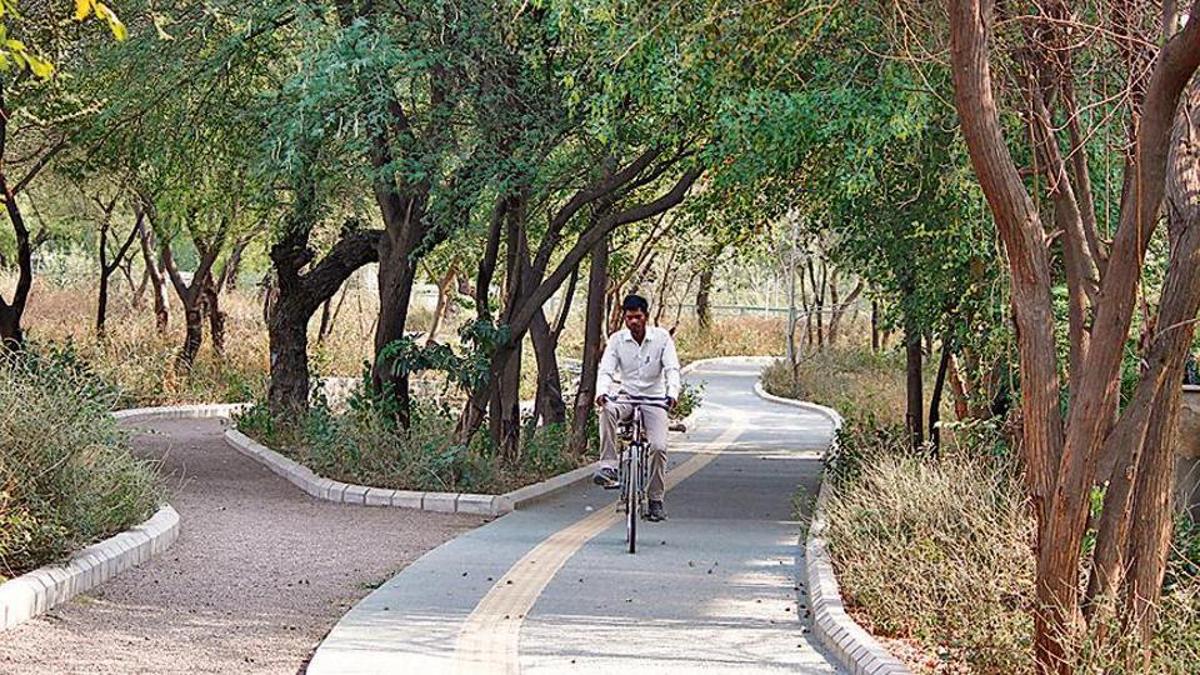
GURUGRAM: The project to restore Gurugram’s newly self-sustaining green public space, Chakkarpur-Wazirabad bundh won the ‘Best Practices to Improve the Living Environment’ award by the Housing and Urban Development Corporation of India (HUDCO), under the Union Ministry of Housing and Urban Affairs.
The Chakkarpur-Wazirabad bundh was once a plastic-choked place where illegal sewage dumping was rampant. V S Lamba, district hydrologist, said that the bundh runs for a length of 5.2 km, which begins near Galleria Market and ends in Sector 56, alongside an 8-metre-wide storm water drain, is one among 60 colonial-era bundhs, which were designed to contain rainwater and recharge underlying groundwater reserves.
“Their quality of vegetation, soil and groundwater recharge capacity has been compromised due to encroachments and dumping of waste. However, the same model of restoration can be applied to the other bundhs as well,” added Lamba.
IAmGurgaon, a city based NGO, initiated the restoration effort in collaboration with the state forest department, Haryana Shahri Vikas Pradhikaran (HSVP) and the Municipal Corporation of Gurugram (MCG) in 2015.
M D Sinha, former conservator of forests, Gurugram (south circle), and a private architecture firm, which was hired to redesign the landscape, jointly received the award from HUDCO.
Latika Thukral, founder of IAmGurgaon, said that in 2015 the Chakkarpur-Wazirabad bundh and the adjoining nullah were completely ignored. Stray dumps of garbage and construction waste were everywhere, and the waterway was confined with mainly dark, polluting, foul-smelling sewage. NGO’s idea was to restore the waterway, help groundwater recharge, and convert the bundh into a city forest, to give the citizens of Gurugram a green public space.
Thukral added that it took three years and funds of Rs 14 crore sourced from corporate social responsibility funds from the various Gurugram-based private companies, the bundh now stands desilted, clean and alive with indigenous vegetation. “Currently, it attracts both commuters, as well as recreational cyclists, joggers and walkers,” said Thukral.
The restoration was completed in three Phases, starting with restoring the bundh, desilting and cleaning the waterway, and finally planting 30,000 trees and shrubs, belonging to 30 native species, including amaltas, babool, pahadi papdi.
Additionally, for citizens travelling from Chakkarpur to Wazirabad, the cycle tracks and paths built along the bundh offer an alternative route. “The project even provided employment to over 200 people, including contract labourers, gardeners and masons,” Thukral added.
